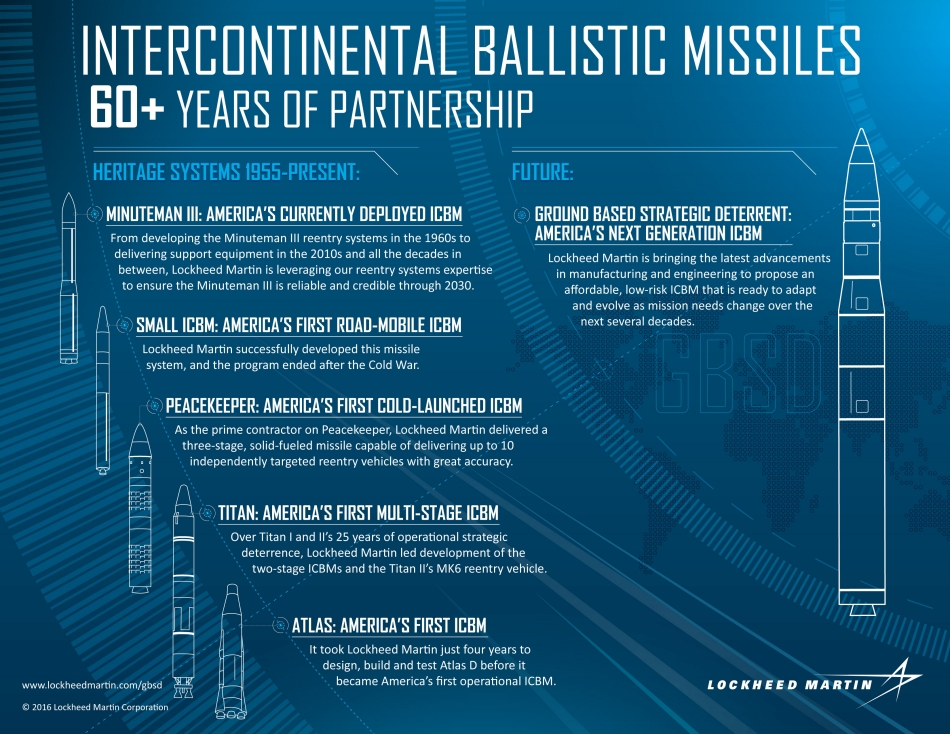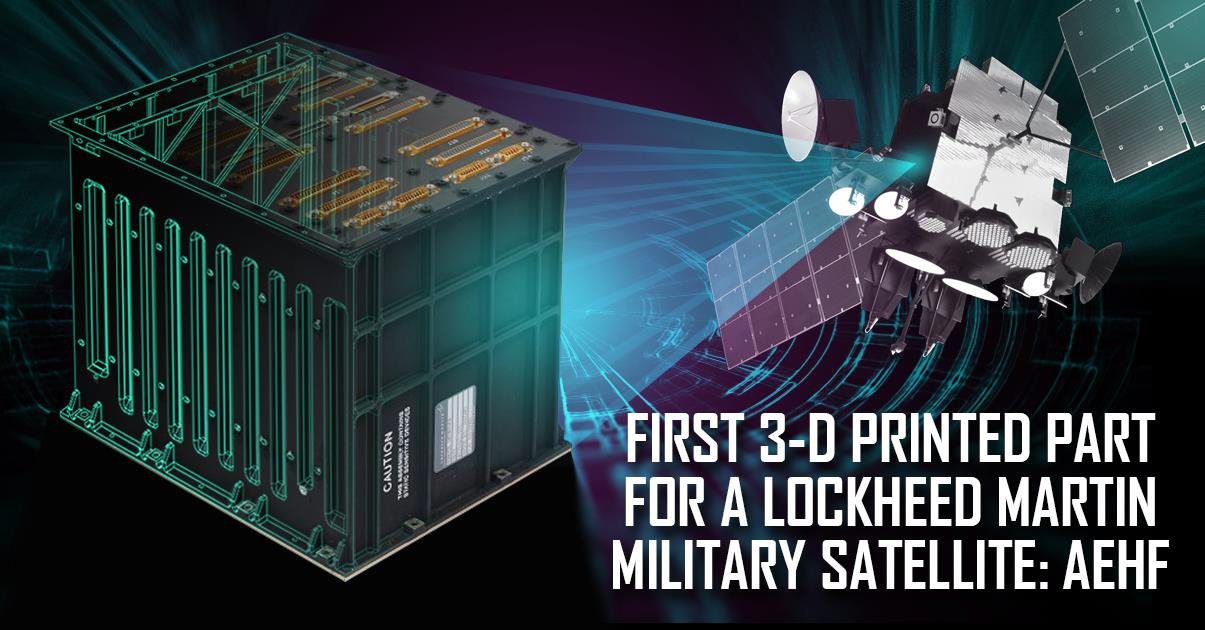American defense company, Lockheed Martin has revealed plans to use 3D printing to develop the U.S. Air Force’s next generation of intercontinental ballistic missiles (ICBM). The company has also announced development of a 3D printed part for the U.S. Air Force’s military satellite.
Lockheed Martin is currently applying for the U.S. Air Force’s Ground Based Strategic Deterrent ICBM contract and intends to utlilize advanced design technology at its Collaborative Human Immersive Lab (CHIL) in Colorado.

Virtual visualizations
Northrop Grumman and Boeing are also in consideration for the development of the missile. According to Air Force Magazine, a part of the U.S. Air Force Association, two contracts will be offered by the end of fiscal 2017. If granted to Lockheed Martin, the company intends to make use of 3D printing and the CHIL which they opened in 2010.
The CHIL’s immersive environment contains virtual reality (VR) technology and would help the design process for the GBSD. John Karas, vice president and GBSD program manager, explained that the CHIL could be used map the inside of existing missile silos to see how the new ICBM would work in the existing space.
Such VR based design is seeing increasing use across design for manufacturing. One example is France’s Dassault Systèmes, who released a Virtual Reality compatible version of their 3DEXPERIENCE product viewer.
A 3D printed missile
Minuteman III missiles are the missiles in current use by the US Air Force, but these are intended to be replaced by the GBSD. Karas also explained that the company would like to make use of 3D printing technology in creating components for the missiles to save time and money.

3D printed satellite parts
The US Air Force’s Advanced Extremely High Frequency (AEHF-6) satellite will also contain a 3D printed part made by Lockheed Martin.
The aluminium Remote Interface Unit, an enclosure for electronic circuits, will be the first 3D printed part to be used on a Lockheed Martin military satellite. According to the company, the part is made using “Laser Powder Bed Fusion additive manufacturing” and will be deployed on AEHF-6 in 2019.
Additionally, the company is developing other AEHF-4 and AEHF-5 models to launch this year and in 2018.

By using 3D printing, Lockheed Martin has reduced the Remote Interface Unit from several machined parts to just one. With lead times dropping from six months to one and a half, and assembly time a quarter of its original counterpart. This is not the first time Lockheed Martin has sent 3D printed parts into space. The company has also used 3D printing to make parts of the Juno spacecraft.
Adaptability
One of the key benefits Lockheed Martin has cited for using 3D printing is the ability to adapt. The technology enables the company to respond quickly to changes and support the life-cyle of the products. Iris Bombelyn, vice president of Protected Communications at Lockheed Martin Space Systems, comments,
3-D printing provides the ability to rapidly implement innovation by controlling production from design through implementation with one digital model. By providing affordable, innovative solutions for our customers with a reduced timeline, we are able to adjust to the rapidly changing environment of military space.
If you haven’t already, place your votes in the 3D Printing Industry Awards.
For the latest news on 3D printing, sign up to our newsletter and follow us on twitter and Facebook.
Featured image shows the planned GBSD missile. Image via Lockheed Martin.


